Ukiyo-e Exhibition: Cherry Blossoms And Mount Fuji In Woodcut Prints

If you like the Japanese ukiyo-e prints, visit the showroom of the Adachi Foundation for the Preservation of Woodcut Prints. They hold regular exhibitions and demonstrations showing the whole process of making a brightly colored ukiyo-e print.
Have you ever wondered how the vividly colored Japanese woodcut prints (also known as ukiyo-e or hanga) are made? The printing techniques used to create ukiyo-e have been developed in the Edo period (1603 - 1868) and have gained great popularity through the works of masters such as Katsushika Hokusai (1760 - 1849) and Utagawa Hiroshige (1797 - 1858).
The Adachi Foundation for the Preservation of Woodcut Printing is an institution whose mission is to ensure that the woodcut printing techniques are kept alive through the work of contemporary artisans and to spread the public knowledge about this Japanese traditional art. In addition to regular ukiyo-e exhibitions held at the facility's showroom, the Adachi Foundation holds woodcut print workshops and demonstrations showing the whole process of completing a traditional woodcut print.
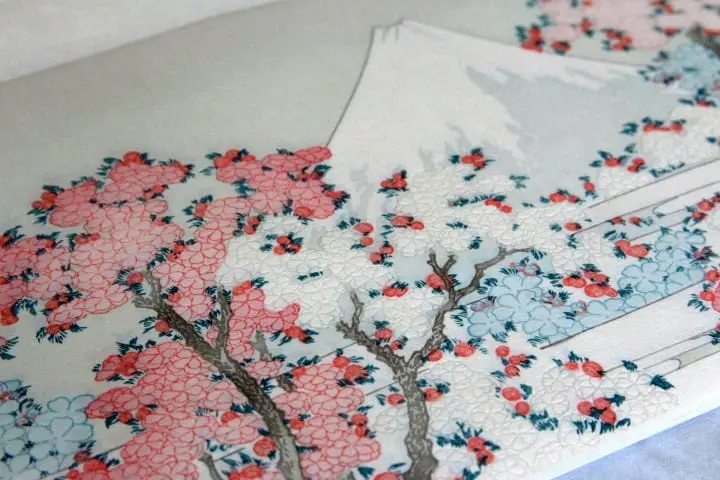
Picture courtesy of the Adachi Foundation for the Preservation of Woodcut Printing
Until April 16th, the foundation holds an exhibition entitled "Ukiyo-e Exhibition of Cherry Blossoms and Mount Fuji Brought to Life in Brilliant Colors through Craftsmanship". The exhibition displays woodcut prints inspired by the beauty of the cherry blossoms and Mount Fuji, the two prominent symbols of Japan.
In addition, on April 4th, there will be a ukiyo-e print demonstration and trial session with English interpretation. The participants will be able to see a demonstration of woodcut printing by artisans, and even try their hand at making their own ukiyo-e print which they will be able to take home as a souvenir! The participation to this workshop is free of charge - a reason for us to warmly recommend it!
The Adachi Foundation for the Preservation of Woodcut Printing
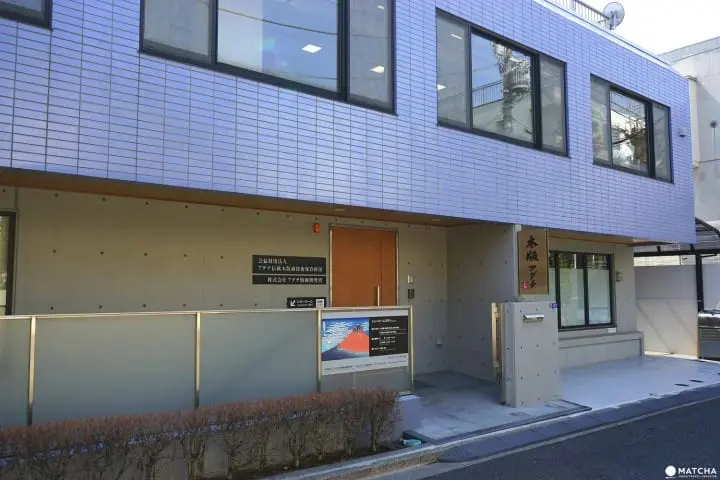
The Adachi Foundation for the Preservation of Woodcut Printing has been established in 1994. Its purpose is to support the passing on of traditional woodcut printing techniques to future generations of artisans.
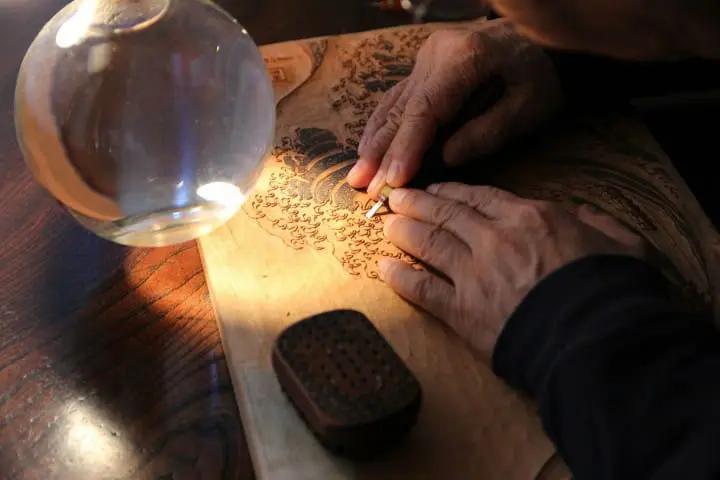
Picture courtesy of the Adachi Foundation for the Preservation of Woodcut Printing
Woodcut printing is a composite art resulting from the collaboration of three artisans: the artist who draws the image on paper, the carver who carves the image into a woodblock, and the printer who used the woodblock and colors in order to reproduce the original image. They work together with a publisher, the producer who plans each work by observing the social trends and who receives requests from clients.
This whole process originates in the Edo period (1603 - 1868) when the ukiyo-e artists used to create images of everyday life, of famous views around the country, or of popular actors and courtesans who were captivating the citizens with their beauty.
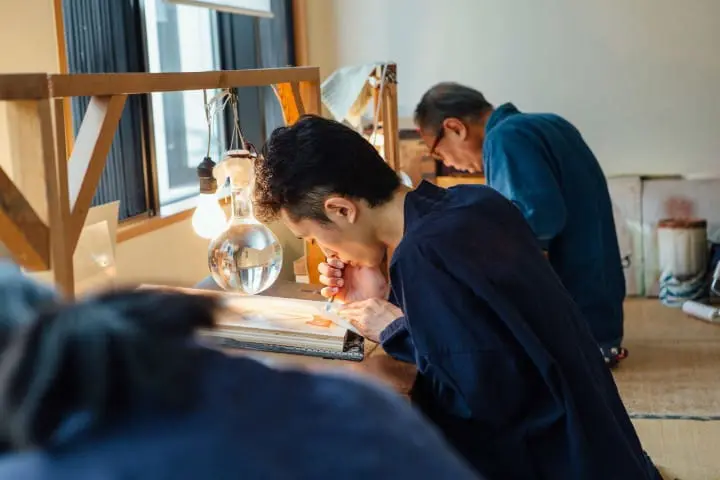
Picture courtesy of the Adachi Foundation for the Preservation of Woodcut Printing
The Adachi Foundation is supporting the research and preservation of the traditional woodcut printing techniques by producing and publishing the famous works by Edo and Meiji period artists, as well as the new works created by contemporary hanga artists.
Through regular exhibitions and workshops, the foundation promotes the art of woodcut printing, ensuring that knowledge about this art is spread within Japan and abroad.
Until April 16th! Ukiyo-e Exhibition of Cherry Blossoms and Mount Fuji

An exhibition dedicated to the ukiyo-e representations of cherry blossoms and Mount Fuji will be held until April 16th (2017) at the showroom of the Adachi Foundation for the Preservation of Woodcut Printing.
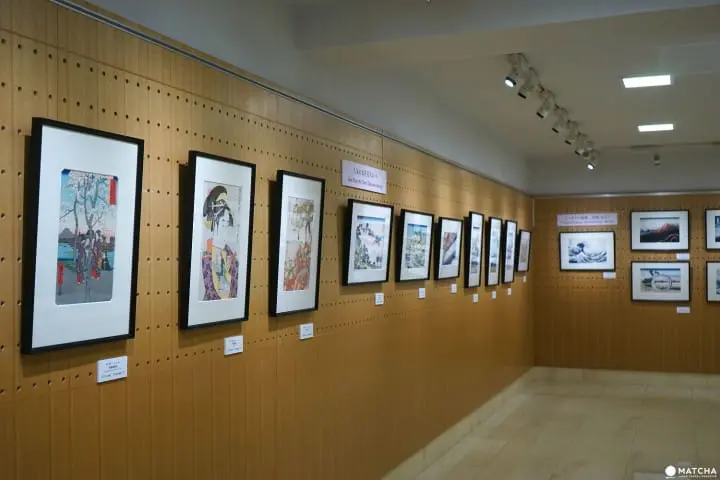
Visitors will be able to see famous works by artists like Hokusai and Hiroshige, as well as by other artists whose beautiful representations of Japan's most treasured symbols have delighted generations and generations of Japanese.
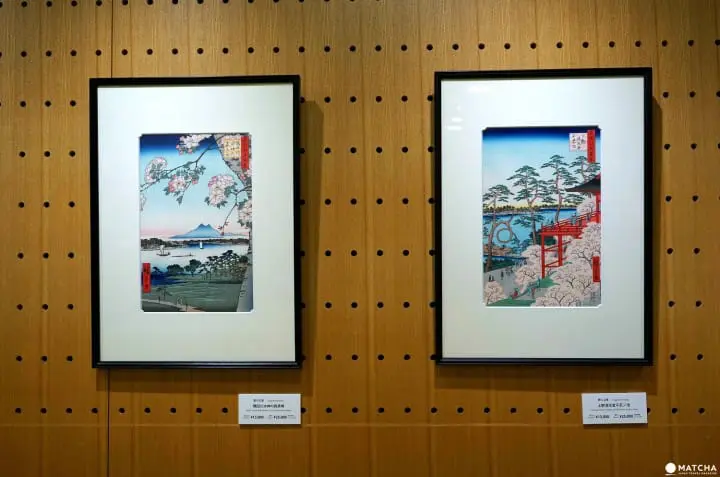
The vividly colored works illustrating the famous places for cherry blossom viewing have enjoyed great popularity over the centuries. It wouldn't be an exaggeration to say that the custom of enjoying hanami (cherry blossom viewing) in famous places such as Mount Yoshino (Nara) or Ueno and the Sumida River area (present-day Tokyo) was inspired by the brilliant ukiyo-e illustrations created at the end of the Edo period (1603 - 1868).
While most of the works on display are images that have circulated widely ever since their creation, some of the ukiyo-e in this exhibition are very rare works that were originally commissioned by private collectors. These exquisite works feature extremely fine details that show the craftsmanship of the woodcut print artisans. There is no better way to enjoy them than admiring them carefully up close.
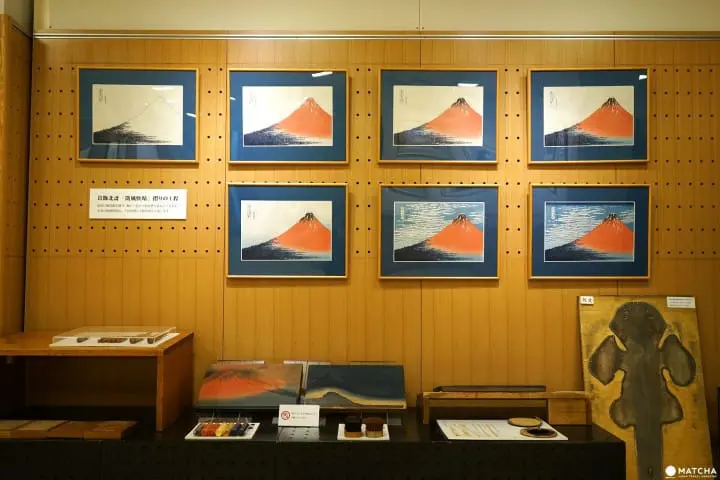
One corner of the exhibition is dedicated to the ukiyo-e printing process itself, illustrating the various stages undergone by a ukiyo-e print until its completion. If you would like to learn more about the printing techniques that make possible the beautiful ukiyo-e works, take a close look at the tools used by the ukiyo-e carvers and printers. This display offers great insights into craftsmanship behind the fascinating ukiyo-e.
Ukiyo-e Printing Demonstration and Trial Session for Foreign Guests

Picture courtesy of the Adachi Foundation for the Preservation of Woodcut Printing
On April 4th, from 1 PM, a ukiyo-e printing demonstration with English interpretation will be held at the showroom of the Adachi Foundation for the Preservation of Woodcut printing.
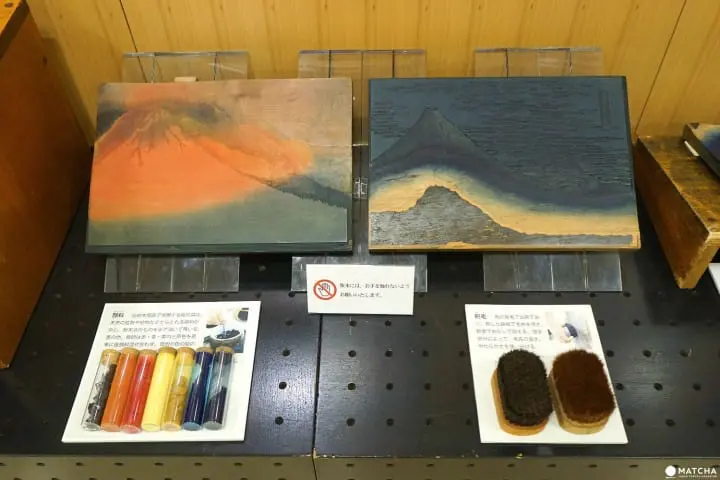
The participants will be able to see the artisans at work as they recreate one of the most famous ukiyo-e works. At the trial session after the demonstration, the participants will be able to try their hand at making a simple version of a woodcut print! These self-made works can be taken home as souvenirs.
The participation to this event is completely free of charge so, if you are in Japan during this time of the year, we strongly encourage you to visit the showroom of the Adachi Institute for Woodcut Prints on April 4th. You will be able to see the both the demonstration and the wonderful exhibition of works illustrating cherry blossoms and Mount Fuji.
Because the number of participants in the trial session is limited to 30 persons, please make a reservation by sending an e-mail with your name and the number of participants to the organizers at adachi@adachi-hanga.com.
For further details on the event please refer to the website of the Adachi Foundation.
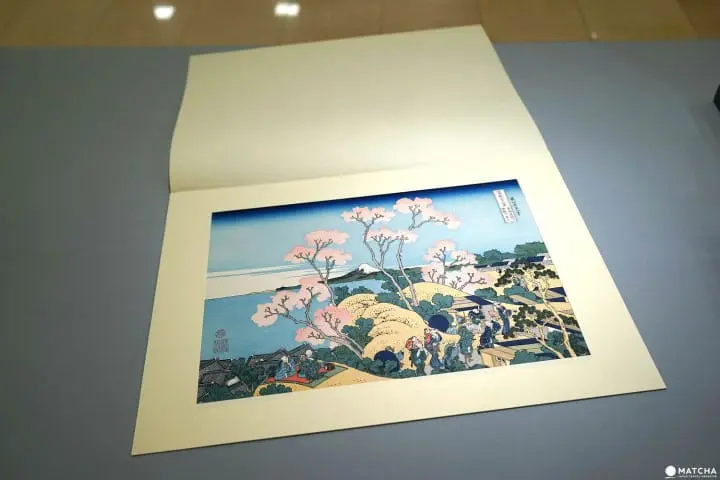
By enjoying the ukiyo-e exhibition and watching the artisans' demonstration you'll discover how accessible are the woodcut prints in comparison with other types of art. In fact, the ukiyo-e prints may be touched and held in one's hands. Feeling the texture of the washi (Japanese paper) and seeing the brilliant colors of the prints up close will enhance your experience of rediscovering the charm of these prints.
It is also possible to purchase ukiyo-e works created by the artisans of the Adachi Institute for Woodcut Prints using traditional techniques. These wonderful works will bring color to your everyday environment, reminding you of the vibrant visual culture of premodern Japan.
In Conclusion
Even if you don't manage to make it to the ukiyo-e exhibition of cherry blossoms and Mount Fuji this year, do stop by the showroom of the Adachi Foundation for the Preservation of Woodcut Printing when you're in Tokyo. They hold regular exhibitions of ukiyo-e works reflecting the highlights of each season. It is a facility worth visiting at any time of the year.
Ramona, English content editor at MATCHA since 2016, has been practicing ikebana flower arrangement (Ikenobo School) and tea ceremony (Omote Senke) since 2012. She arrived in Japan in 2012 as a graduate student with a focus on Japanese literature and performing arts. As a travel editor and writer, Ramona has visited and documented 40 of Japan's prefectures with a focus on art, history, traditional Japanese crafts, and performing arts.


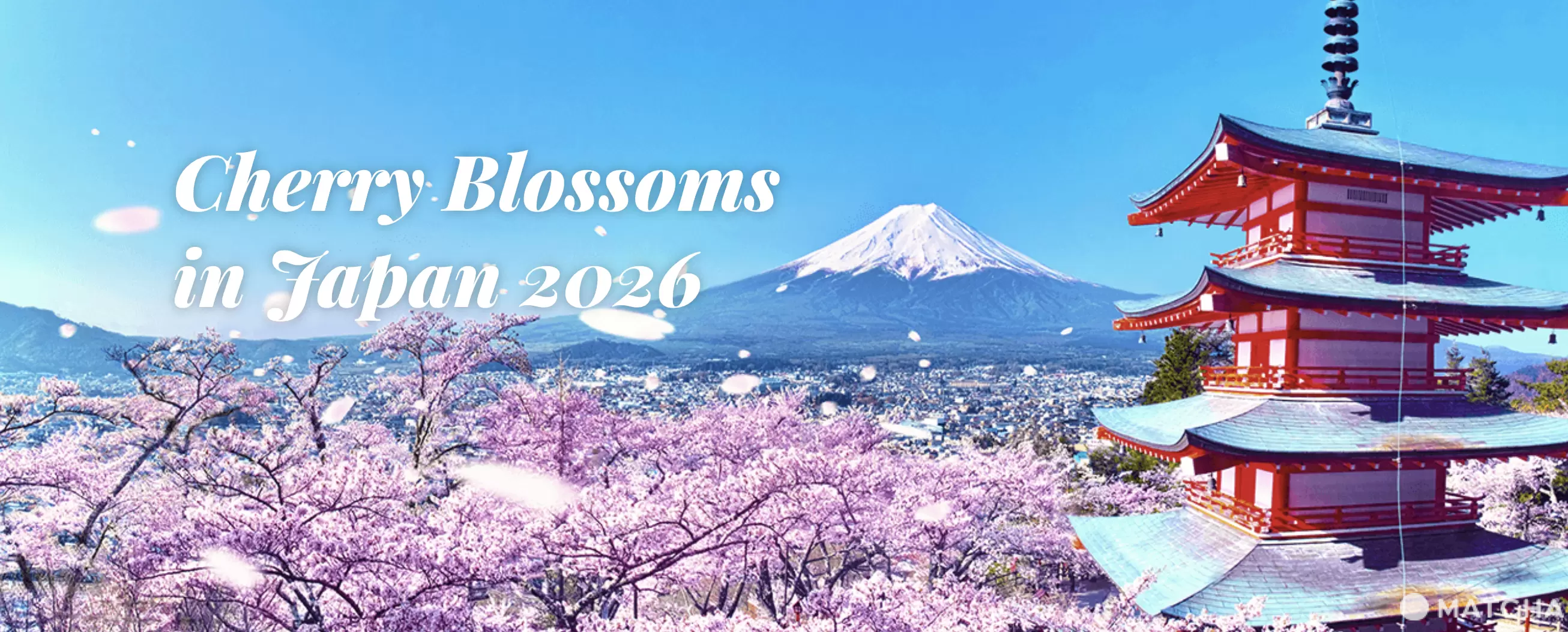







































![[Coupon Available] Attention Overseas Winter Sports Fans! Nagano's Sports Depot Has Evolved](https://resources.matcha-jp.com/resize/720x2000/2026/01/05-254819.webp)
![[2 hours from Tokyo ] 10 Quiet and Breathtaking Views of Mount Fuji in Yamanashi Hokuto City , Yamanashi - Part 2](https://resources.matcha-jp.com/resize/720x2000/2025/12/16-253037.webp)

![[Reopening in March 2026] Ikoma Sanjo Amusement Park Park, 45 minutes from Osaka , with free admission](https://resources.matcha-jp.com/resize/720x2000/2024/08/28-194409.webp)